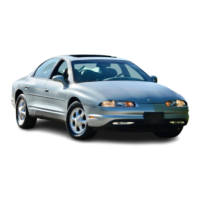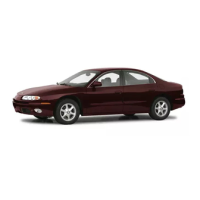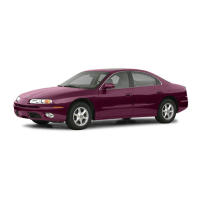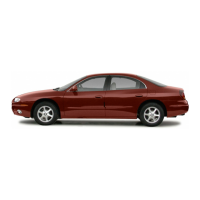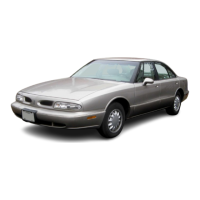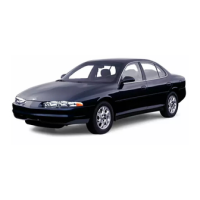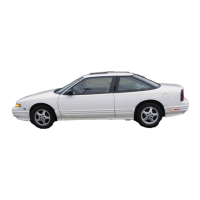When
should
an air bag inflate?
The air bag is designed to inflate in moderate to severe
frontal or near-frontal crashes. The air bag will inflate
only if the impact speed is above the system’s designed
“threshold level.”
If
your vehicle goes straight into a
wall that doesn’t move or deform, the threshold level is
about
8
to 11 mph
(13
to 18
kmh).
The threshold level
can vary, however, with specific vehicle design,
so
that
it can be somewhat above or below this range. If your
vehicle strikes something that will move or deform, such
as a parked car, the threshold level will be higher. The
air bag is not designed to inflate in rollovers, side
impacts, or rear impacts, because inflation would not
help the occupant.
It is possible that in a crash only one
of
the two air bags
in your Aurora will deploy. This is rare, but can happen
in
a
crash just severe enough to make an air bag inflate.
In any particular crash,
no
one can say whether an air
bag should have inflated simply because of the damage
to
a
vehicle or because of what the repair costs were.
Inflation is determined by the angle
of
the impact and
the vehicle’s deceleration. Vehicle damage is only one
indication
of
this.
What makes an air bag inflate?
In a frontal or near-frontal impact of sufficient severity,
the air bag sensing system detects that the vehicle is
suddenly stopping as a result of a crash. The sensing
system triggers a chemical reaction
of
the sodium azide
sealed in the inflator. The reaction produces nitrogen
gas, which inflates the air bag. The inflator, air bag, and
related hardware are all part of the air bag modules
packed inside the steering wheel and in the instrument
panel
in
front of the right front passenger.
1-20

